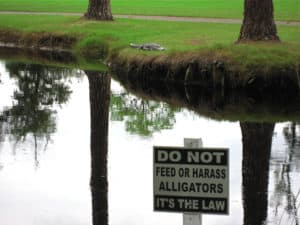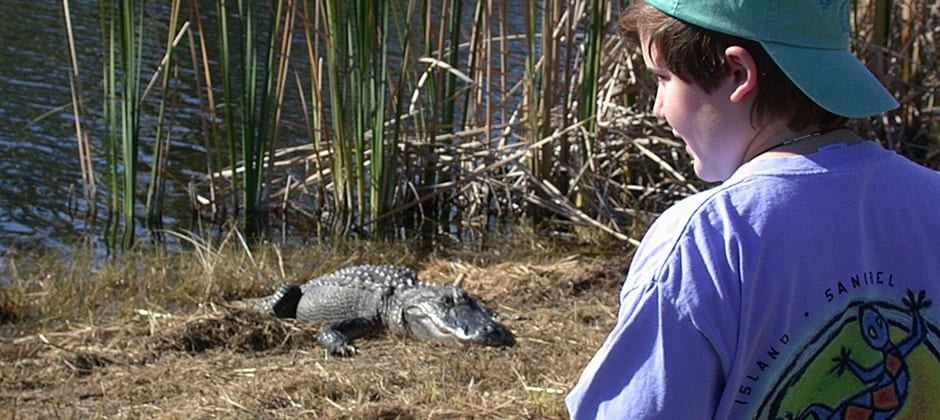Share this article
JWM: When gators attack! — And when they don’t
A landscaper was pruning a tree on Florida’s Sanibel Island when a 12-foot alligator seized her by the arm and dragged her 10 feet to a nearby pond. By the time neighbors and police rescued the woman, she was alive but her arm was so severely damaged, it had to be amputated. She died later during surgery to treat infections from the bite.
The 2004 incident captured headlines, but state wildlife researchers say it was extremely uncharacteristic of American alligators (Alligator mississippiensis). A study analyzing alligator bites in Florida over several decades published recently in the Journal of Wildlife Management dispels a number of myths about alligators, including the notion that they are likely to chase people on land.
“That was an extraordinary event,” said TWS member Allan Woodward, a researcher with the Florida Fish and Wildlife Conservation Commission and the lead author of the study. Alligators rarely pursue people on the ground, he said. The vast majority of attacks happen in or around water, he said, and incidents on land farther than 6.5 feet from the water’s edge usually occur not as a result of a chase but when people are distracted as alligators watch nearby.
“People do routine activities. Alligators cue into that,” Woodward said.
The multi-decade study also debunks the myths that run-ins are more likely with territorial mothers and breeding males and that naïve tourists bear the brunt of them. Ninety-four percent of bites involved Florida residents, researchers found. Golfers may want to beware, though. The researchers found 52 bites on golf courses, 39 cases of which were divers searching for golf balls to sell, and 12 of which were golfers recovering balls in or near water.

Researchers found 52 alligator bite incidents happened on golf courses. ©carlfbagge
Researchers found no indication that bites increased because of spring breeding season and nothing to suggest that females guarding nests were responsible for a larger proportion of bites.
“There is no greater amount of bites during the spring than during the fall non-breeding season,” Woodward said.
The best predictor, they found, was heat.
“As temperatures rise, alligators get hungrier, and people get in the water more,” Woodward said. “Putting the two together, you’re going to have an increased frequency in incidents.”
Of the recorded bites, many weren’t categorized as attacks, Woodward said, but were less serious bites, perhaps from smaller alligators or out of defense.
Researchers found that repeat attacks in the same spot were rare, perhaps partly because the alligators involved in bites are usually killed, but they encountered some notable exceptions, including one Florida man bitten twice while swimming in the same waterway in back-to-back years.
Men were bitten more often than women, and encounters with children not as frequent as researchers expected, probably because of parents keeping an eye out. “We would assume that the smaller you are, the more suitable you are for alligators,” Woodward said.
The good news for people is that while alligators are opportunists, they’re not typically aggressive, Woodward said. Conflicts are less likely in the wild than along canals or bodies of water near human communities.
“They usually don’t view people as prey items,” he said.
The authors developed some recommendations to reduce the chance of getting bitten by alligators. They urge people be cautious around freshwater areas — particularly if they have children with them.
“A lot of times people become complacent about whether there are alligators there or not,” Woodward said.
This article features research that was published in a TWS peer-reviewed journal. Individual online access to all TWS journal articles is a benefit of membership. Join TWS now to read the latest in wildlife research.
Header Image: A visitor and an alligator exchange glances on Sanibel Island in Florida. ©Faxpilot








